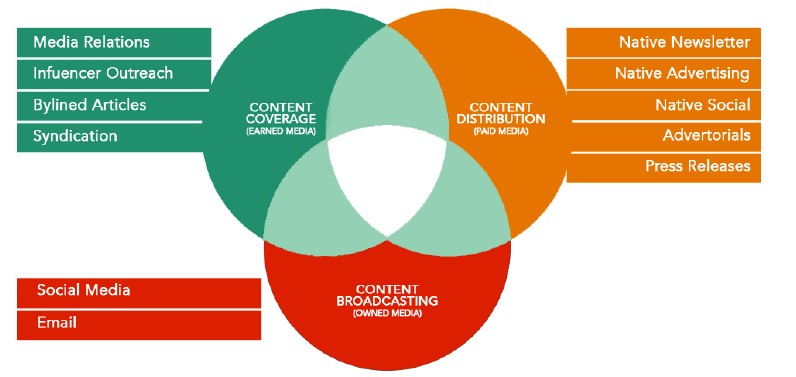
Today we are launching new products in environments that change at full speed. Whether it’s new technology, competition, ecology or legal, everything is moving, and our companies are witnessing it and have to adapt and, adapt their marketing strategy to survive.
The launch of new products or services is one of the strategic ways to ensure the sustainability of an organization, provided that it is well orchestrated to deliver a return on investment (ROI). If it does not, it can cause significant damage to a company and its funders.
Launching a new product based on new technology in a new market has already been described as a suicide zone. Yet, at the speed at which society and technologies are evolving, the situation is increasingly happening. I suggest looking over this post and note the three scenarios based on marketing strategies that can be used depending on whether we master two or three variables (technology, product, market).
If we control at least two of the three variables in these first two examples, what can we do in terms of marketing?
(We do not deal with all the strategic and tactical possibilities. In this blog, we propose elements which we are certain will be performing).
1-The technology/product couple; The case of a CRM
In this case, there is only the market you need to know about. You control your technology and your product. The market already knows what a CRM or customer relationship management system is, but it does not know yours. You are developing this new market with something known in your other markets, but not for this particular market.
Here are some potential marketing actions to develop your TOFU. Not the one on your plate but, your top of funnel or the middle of your funnel or MOFU. in order to generate leads and to make you known in this new market.
Develop a value proposition which of course, has to be validated. Each new market segment contains a lot of expected gains, special challenges and of course, work to be done. If your product is undifferentiated, it is about challenges and how to help your client do his or her job that will find the leverage needed to successfully enter the market.
Develop notoriety for this new market: with a content marketing strategy based on your DNA, i.e. your strategic positioning. From there, you decline in different axes and you put in place your tools (blog, newsletters, case study, etc.) as well as your promotion content campaign (this is where we generate leads) with mix medias.
There’s a lot to say about content promotion since we’ve been around since 2013 in content saturation on the web. This strategy of mix medias requires that you put in place processes and indicators of performance and, put in order sequence, steps and measures to know whether we go to the next step or not. When content promotion is well realized, it offers impressive results on the notoriety, the credibility and the generation of prospects. In this case, if you benefit from a known “brand”, you are beginning with a head start. Remember that you are aiming for a very large market and you need to know the target with much more precision to perform.
2 –The product/market couple is known, however the technology behind it is not
(for example, a video production tool from blog posts such as Lumen 5 or Raw shorts).
The market knows similar products and you know the market. We then need to educate the market on technology. We are therefore in incremental innovation: a product that already exists but is being improved with new technology. The market already has a frame of reference. It’s an improvement on what they already have. In B2B, the element of reliability is crucial, and the argument will be at the heart of the process. There will be significant resistance based on the “Why Change?”. The strategy becomes clearer: you must educate yourself about your technology.
You have different choices to articulate your competitive advantage:
- The “value proposition” for this market already exists and is validated, however;
Where does our innovation bring the most value?
- The work to be done by the customer becomes faster, more reliable, cheaper?
- The gains from using your innovation are important?
- New problems are addressed?
If the new technology-driven features are on a different element than the current market value proposition, this element will make your sales much easier, and will truly become a distinctive advantage. These benefits will allow you to develop new customers.
Your current customers, who should also be your first target:
- Marketing efforts will focus on the middle and bottom of the sales funnel (consideration / evaluation / selection) and the modified content accordingly.
- Vendors are particularly important in this context. It’s a shortened sales cycle. Knowing their customers, sellers are in the best position to argue for the “incremental” value that is based on innovation. We must therefore equip them with support material; demos, data sheets, white paper, videos.
- Effective sales-marketing alignment will increase sales “velocity” by implementing a more efficient account-based approach (ABM).
- Sharing customer testimonials on efficiency will offer a quick impact.
Your strategic positioning should be reinforced by incremental innovation or allow you to attack the “position” occupied by a competitor in the minds of your customers and prospects. Normally, your “brand” will also be strengthened, provided that the customer experience offered by this innovation is consistent with what you have always offered.
It’s necessary to review the personas and determine whether the “evaluator” is always the same.
3- A little complex: your innovation is “ground-breaking”
This breaking technology will significantly change current products or generate a whole new product category. To develop a competitive advantage around breakthrough innovation, what should be done? (Source: Forbes May 2018).
- Develop a “Thought leadership” strategy: convey a simple vision of what will change and one that everyone will understand.
- Work on the Value Proposition (validated) will focus on the element that will create the most value in a context of increasing the likelihood of rapid adoption of the technology (typically through a new product integrating design thinking)
- Uncover business influencers (attacking a market niche that will demonstrate the final proof of concept and “sell” reliability).
- Have a figurehead, spokesperson for the brand (Apple: Steve Jobs).
- Quickly integrate into the ecosystems that will use your techno (find your early adopters and do quick iterations or even product co-development to move faster to commercialization).
- Provocative content strategy; you have to stand out and get “Earned Media” (illustration above).
- Expect a large public relations budget.
In the end, our strategic positioning can be called to change. A search will then be necessary to redefine the axes. Watch out for the brand, to avoid the old perception harming you, it will undoubtedly need to evolve, as does your positioning!
The importance related to the reliability of the new technology can also change the balance of power on purchasing committees. Revisiting personas will become inevitable. In any case, you have to be agile and ready to change any activities – or even revise the strategy in the months following the launch.
To learn more contact us.







